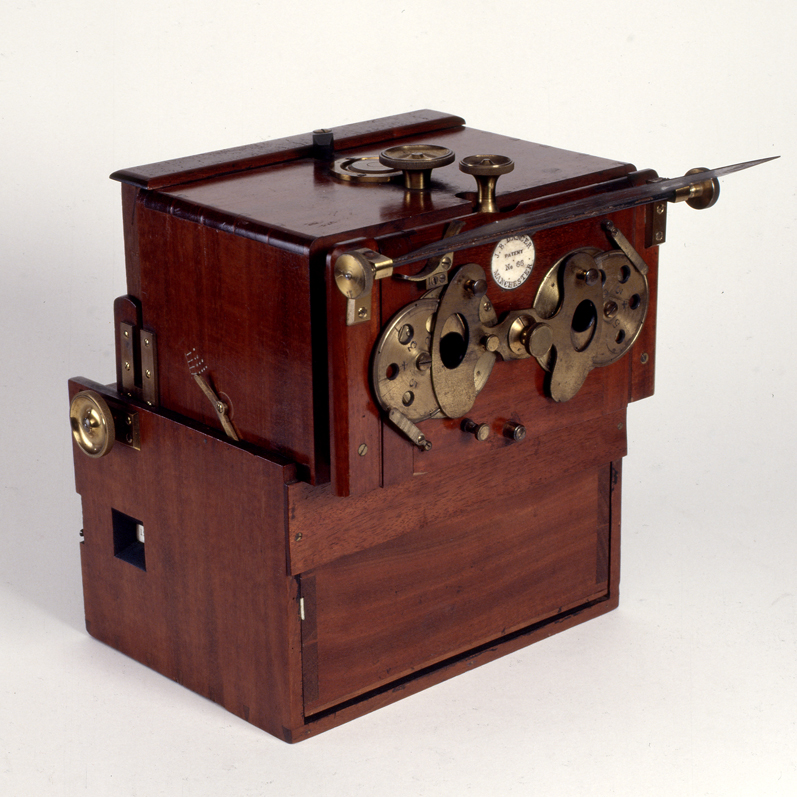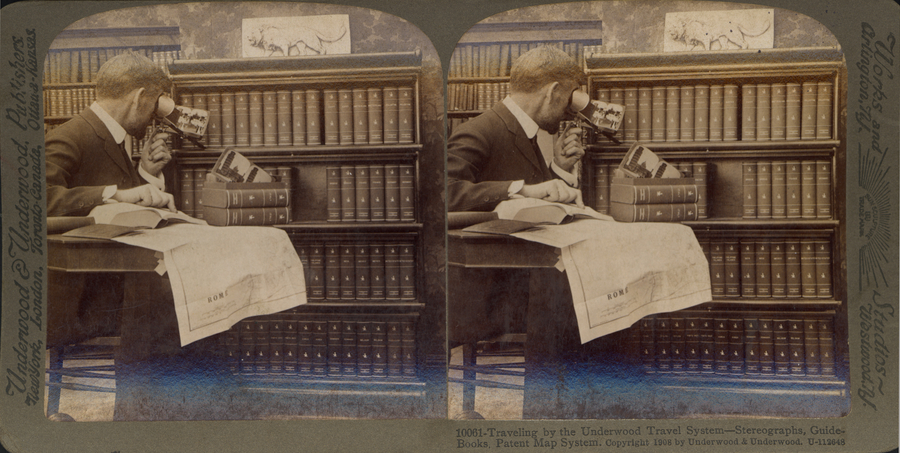Week 51 - 2015

John Benjamin Dancer (1812–1887), Dancer stereo camera, 1856, England (photo: Helle K. Hagen/Preus museum).
Photography in stereo
Say hello to the 3D camera's great-grandfather, namely the stereo camera. It produced unbelievably popular kinds of images that veritably inundated the market at the end of the 1800s.
Stereographic images helped turn photography into an industry. The masses wanted to see more of the world, and stereo photography let people imagine they were there. It all involves an optical effect that exploits our depth perception. Two images of the same motif are photographed with a distance between them comparable to that between our eyes. When this pair of photographs is mounted on a cardboard backing and set in a stereo viewer, the motif appears to be three-dimensional.
The Preus Museum has a collection of ca. ninety stereo cameras, among them some of the rarest in the world. When the 1856 Dancer stereo camera was bought by the Preus Museum of Photography in Horten in 1977, the purchase was talked about even in the foreign press. It set a new record for a purchase price at $37,500.
John Benjamin Dancer (1812-1887), a professional maker of optical instruments and an enthusiastic inventor, pioneered in stereo photography and also experimented with microphotography when photography itself was completely new. Dancer's stereo camera was one of the first of any kind with a double lens. It consists of two boxes placed on top of each other – a stereo camera on top of a magazine where the glass plates on which the photograph is registered are kept.
The camera also has two lenses just over six cm apart, about the same distance we have between our two pupils. In front of the lenses two discs are mounted with various shutter openings from f/9 to f/28. The brass plate with holes constitutes the shutter. By turning it one can open both lenses at the same time. This was a clear improvement over the earlier point when the shutter involved taking the cover of the lens off and putting it back on, which was difficult to do simultaneously since there were two lenses.
Although the camera could use collodion wet plates, it was probably the first magazine camera made for the new dry collodion glass plates. The magazine has room for twelve 3.5 x 7 inch glass plates.
The finished pair of images can correctly be seen only in the appropriate stereo viewer. With the stereoscope in hand you can lock out the world and have a little theater of your own. You sit before a scene whose dimensions imitate those of the real world.

Unnkown photographer, Travelling by the Underwood Travel System - Stereographs, Guide Books, Patent Map System, Copyright 1808 by Underwood & Underwood.
The stereo image shows someone on a trip in his own world among a multitude of stereo pictures published by Underwood & Underwood.




